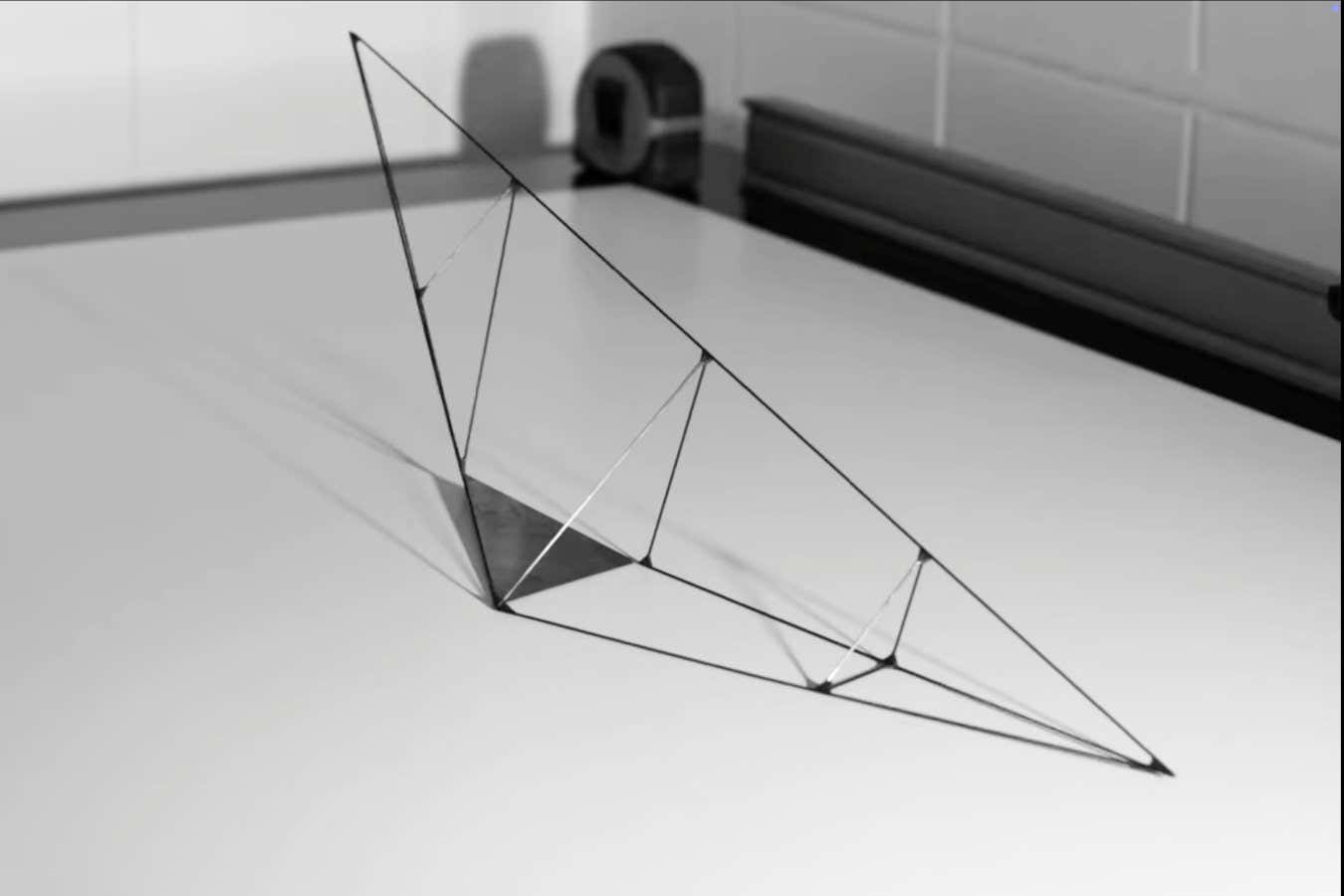
The self-righting tetrahedron
Gergő Almádi et al.
A four-sided shape that will always come to rest on the same side no matter what side it starts on has been built by mathematicians, decades after it was first proposed to exist.
Mathematicians have long been fascinated by self-righting “monostable” shapes, which have a preferred resting spot when placed on a flat surface. One famous example is the Gömböc, a curved, tortoise-shell-shaped object that has a precise weight distribution and will rock side to side until it reaches the same stable resting place.
In 1966, mathematician John Conway was working on how straight-edged shapes balance and proved that a four-sided shape, or tetrahedron, with an even distribution of mass would be impossible. However, he told his colleagues at the time that an unevenly balanced monostable tetrahedron could be possible, but never proved it.
Now, Gábor Domokos at the Budapest University of Technology and Economics, Hungary, and his colleagues have built a monostable tetrahedron, which they call the Bille, using carbon-fibre struts and a plate made of ultra-dense tungsten carbide. The name comes from the Hungarian word for tip, billen.
They first started work on the problem when Domokos asked his student, Gergő Almádi, to search for Conway’s tetrahedron by conducting a brute-force search with powerful computers. “You check every tetrahedron, and with some luck, you find it, or with time, or with [computing power], or a mixture of those,” says Domokos.
As Conway predicted, they didn’t find any monostable tetrahedra with an even weight distribution, but they did find some candidate uneven ones, and went on to prove their existence mathematically.
Domokos and his team wanted to then build a real-life example, but this proved to be “an order of magnitude more difficult”, he says. This is because, according to their calculations, the difference between the density of the weighted and unweighted parts of the objects needed to be about 5000-fold, meaning the object would need to be essentially made from air but still rigid.
To make the shape, Domokos and his team partnered with an engineering company and spent thousands of euros to precisely engineer the carbon-fibre struts to within a tenth of a millimetre and make the tungsten base plate to within a tenth of a gram.
When Domokos first saw the functioning Bille in real life, he felt like he “was levitating 1 metre above the ground”, he says. “It is a big pleasure to know that you achieved something which would make John Conway happy.”
“There is no pattern, previous example or nothing in nature which would [have suggested to Conway] that this shape exists,” says Domokos. “It was in such an obscure corner of reality that no human [could] reach it” until now, “when you have powerful computers and you’re willing to pay thousands of dollars”.
The shape they constructed has a specific tipping path between its sides, says Domokos, tipping from B to A, from C to A, and from D to C and C to A. There is another kind of monostable tetrahedron that tips sequentially from D to C to B to A, but Domokos says their calculations indicate they would need a material that is one-and-a-half times as dense as the sun’s core to build it.
Domokos hopes their work will help engineers alter the geometry of lunar landers to make them less likely to fall over, as several recent spacecraft have done. “If you can do it with four faces, you can do it with any other number of faces.”
Topics:
Source link : https://www.newscientist.com/article/2486184-mathematicians-create-a-tetrahedron-that-always-lands-on-the-same-side/?utm_campaign=RSS%7CNSNS&utm_source=NSNS&utm_medium=RSS&utm_content=home
Author :
Publish date : 2025-06-27 16:47:00
Copyright for syndicated content belongs to the linked Source.














